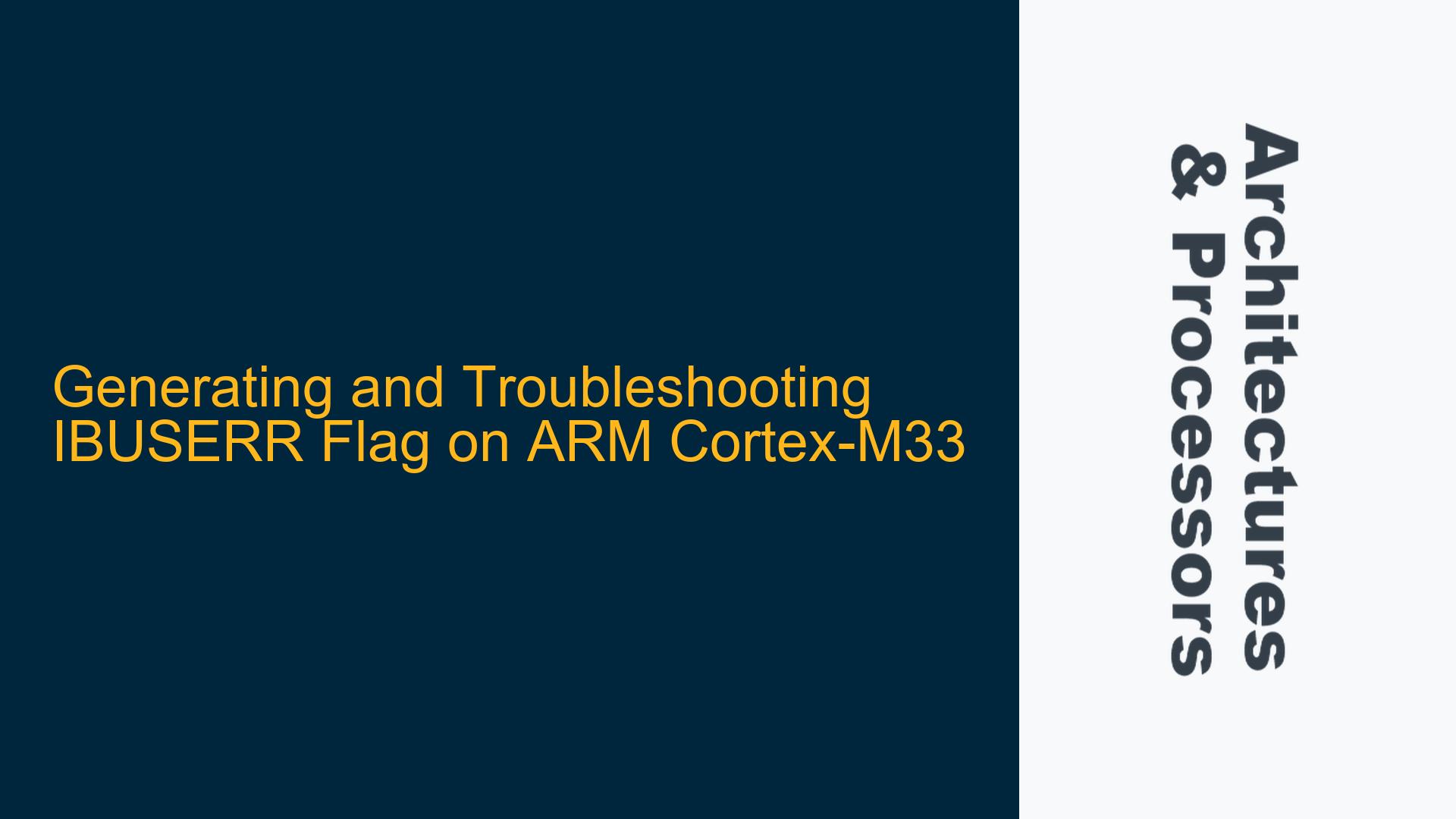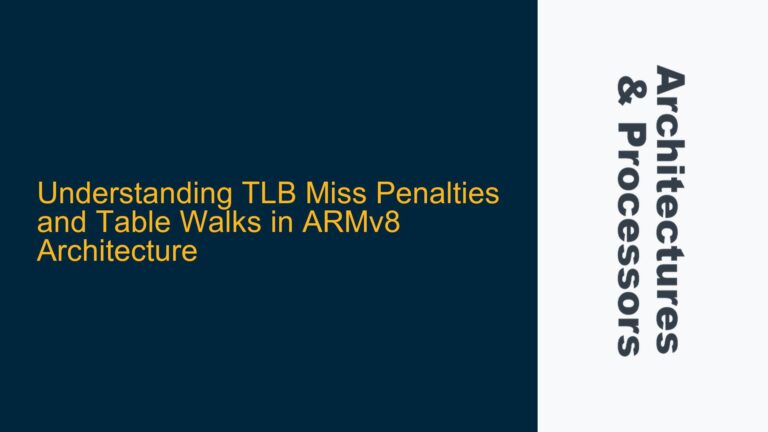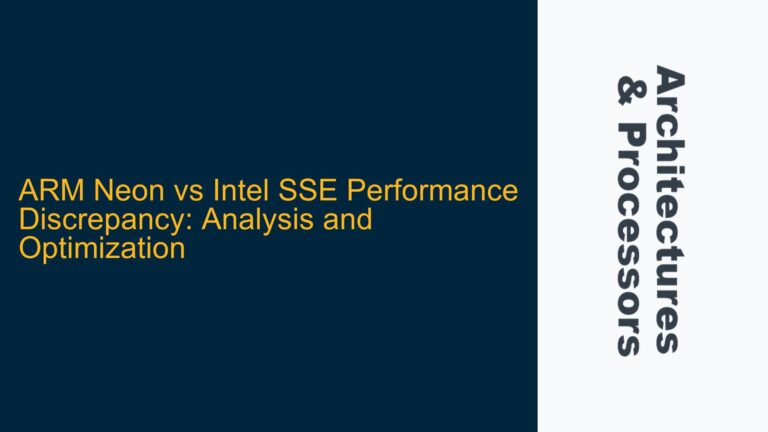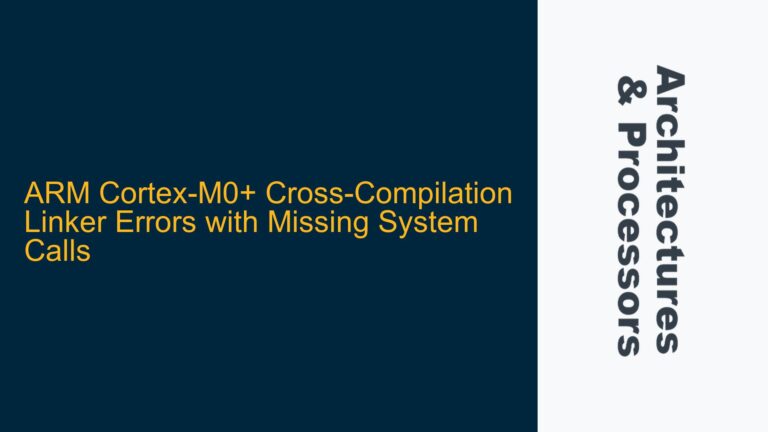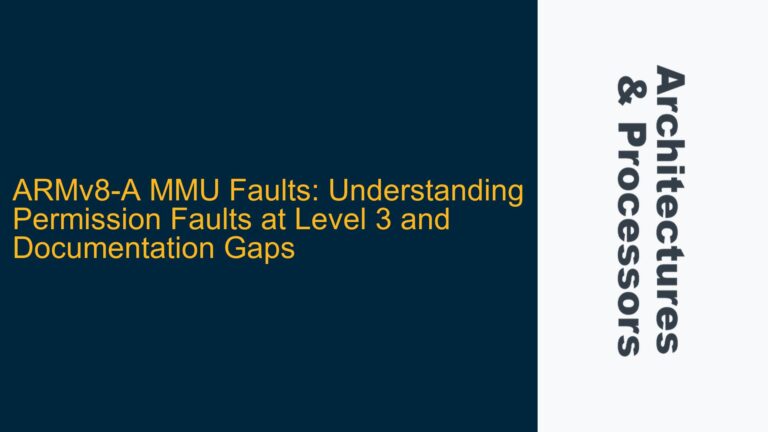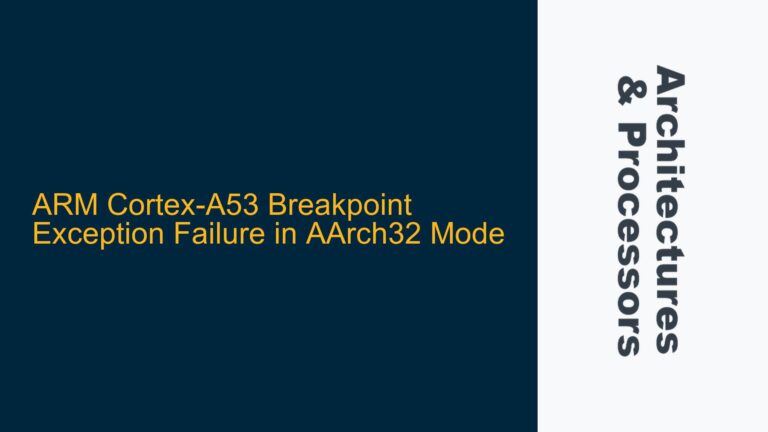ARM Cortex-M33 IBUSERR Flag Generation and HardFault/BusFault Scenarios
The IBUSERR flag, represented by bit 0 in the BusFault Status Register (BFSR), is a critical indicator of instruction bus errors on ARM Cortex-M33 processors. When the IBUSERR flag is set, it signifies that the processor has encountered a fault during an instruction fetch operation. This fault typically results in a HardFault or BusFault exception, depending on the configuration of the fault handling system. Understanding how to generate and troubleshoot the IBUSERR flag is essential for diagnosing and resolving issues related to instruction bus integrity, memory access violations, and misaligned or invalid instruction fetches.
The ARM Cortex-M33 processor implements a sophisticated fault handling mechanism that includes multiple fault status registers, such as the BFSR, to provide detailed information about the nature of the fault. The IBUSERR flag specifically indicates that the processor attempted to fetch an instruction from an invalid or inaccessible memory location. This could be due to several reasons, including but not limited to, accessing unmapped memory regions, attempting to execute code from a memory region with insufficient permissions, or encountering a physical bus error during the instruction fetch cycle.
To generate the IBUSERR flag, one must intentionally create a scenario where the processor attempts to fetch an instruction from an invalid address. This can be achieved by modifying the program counter (PC) to point to an invalid memory location or by configuring the memory protection unit (MPU) to restrict access to specific memory regions. However, generating the IBUSERR flag in a controlled manner requires a deep understanding of the ARM Cortex-M33 memory map, the MPU configuration, and the fault handling mechanism.
Memory Access Violations and MPU Configuration Issues
One of the primary causes of the IBUSERR flag being set is memory access violations. The ARM Cortex-M33 processor uses a memory protection unit (MPU) to enforce access permissions for different memory regions. If the processor attempts to fetch an instruction from a memory region that is not accessible due to MPU restrictions, the IBUSERR flag will be set, and a BusFault or HardFault exception will be triggered.
The MPU on the Cortex-M33 is highly configurable, allowing developers to define up to 16 different memory regions, each with its own set of access permissions. These permissions include read, write, and execute privileges, and they can be set independently for privileged and unprivileged software. If the MPU is configured to deny execute permissions for a specific memory region, any attempt to fetch an instruction from that region will result in an IBUSERR fault.
Another common cause of the IBUSERR flag being set is accessing unmapped or reserved memory regions. The ARM Cortex-M33 memory map includes several regions that are either reserved for future use or are not implemented on a particular device. Attempting to fetch an instruction from these regions will result in a bus error, and the IBUSERR flag will be set. This can occur if the program counter (PC) is inadvertently set to an invalid address, either due to a software bug or as a result of stack corruption.
In addition to MPU configuration issues and memory access violations, the IBUSERR flag can also be set due to physical bus errors. These errors can occur if there is a problem with the memory subsystem, such as a faulty memory device or an incorrect memory controller configuration. Physical bus errors are less common in well-designed systems, but they can still occur, especially during the development and debugging phases.
Controlled Generation of IBUSERR and Fault Handling Strategies
To generate the IBUSERR flag in a controlled manner, one can modify the program counter (PC) to point to an invalid memory location. This can be done by writing an invalid address directly to the PC register or by using a branch instruction to jump to an invalid address. For example, the following assembly code snippet demonstrates how to generate an IBUSERR fault by branching to an invalid address:
LDR R0, =0xFFFFFFFF ; Load an invalid address into R0
BX R0 ; Branch to the invalid address
When this code is executed, the processor will attempt to fetch an instruction from the address 0xFFFFFFFF, which is typically an invalid address on most ARM Cortex-M33 devices. This will result in a bus error, and the IBUSERR flag will be set in the BFSR.
Another approach to generating the IBUSERR flag is to configure the MPU to deny execute permissions for a specific memory region. This can be done using the following steps:
- Define a memory region in the MPU that covers the address range of interest.
- Set the execute permission for this region to "Never" for both privileged and unprivileged software.
- Ensure that the MPU is enabled by setting the MPU Enable bit in the MPU Control Register (MPU_CTRL).
Once the MPU is configured, any attempt to fetch an instruction from the restricted memory region will result in an IBUSERR fault. This approach is particularly useful for testing the fault handling mechanism and ensuring that the system responds appropriately to instruction bus errors.
When the IBUSERR flag is set, the processor will trigger a BusFault or HardFault exception, depending on the configuration of the fault handling system. The default behavior is to trigger a HardFault exception, which is a non-maskable interrupt (NMI) that cannot be disabled. However, if the BusFault exception is enabled in the System Handler Control and State Register (SHCSR), the processor will trigger a BusFault exception instead.
To handle the IBUSERR fault, the fault handler must first determine the cause of the fault by examining the BFSR. The IBUSERR flag will be set in the BFSR if the fault was caused by an instruction bus error. The fault handler can then take appropriate action, such as logging the fault, resetting the system, or attempting to recover from the fault.
In some cases, it may be necessary to clear the IBUSERR flag before returning from the fault handler. This can be done by writing a 1 to the IBUSERR bit in the BFSR. However, care must be taken to ensure that the fault condition has been resolved before clearing the flag, as clearing the flag without resolving the underlying issue could result in the fault being triggered again.
In conclusion, the IBUSERR flag on the ARM Cortex-M33 processor is a critical indicator of instruction bus errors that can occur due to memory access violations, MPU configuration issues, or physical bus errors. Generating the IBUSERR flag in a controlled manner requires a deep understanding of the ARM Cortex-M33 memory map, the MPU configuration, and the fault handling mechanism. By following the steps outlined in this guide, developers can effectively generate and troubleshoot the IBUSERR flag, ensuring that their systems are robust and reliable.
